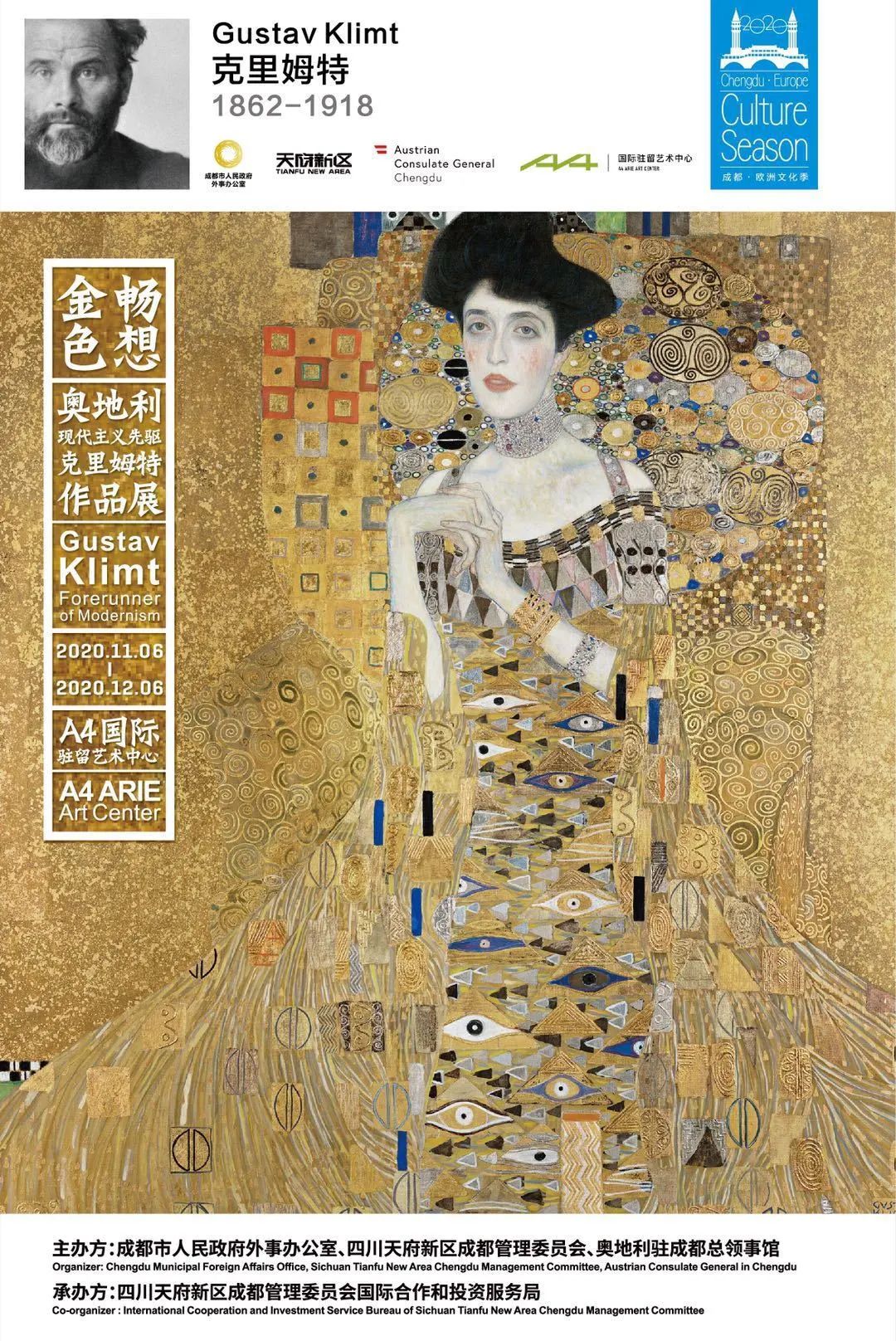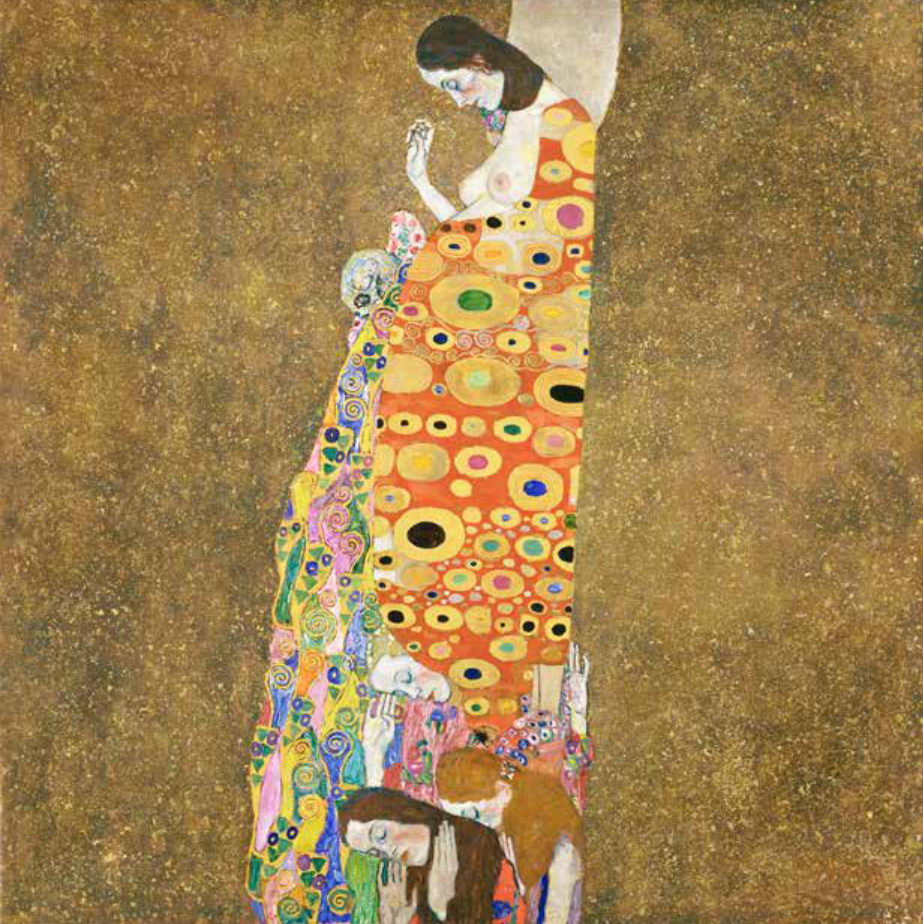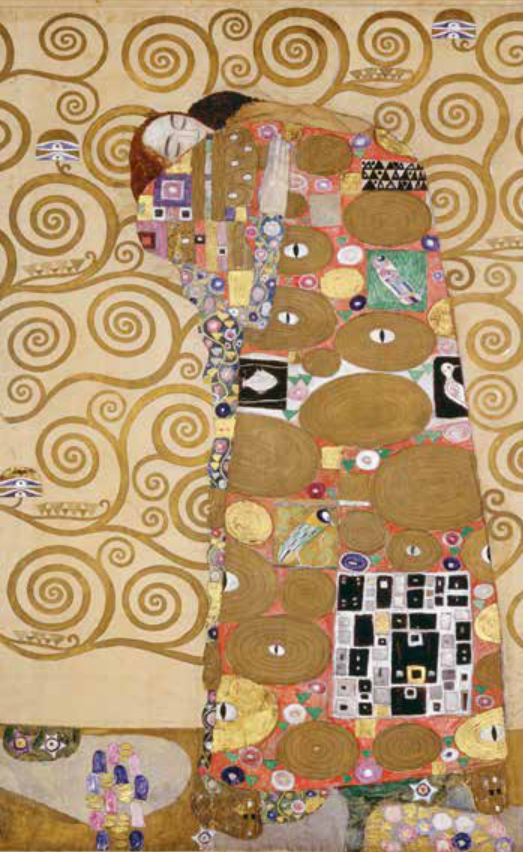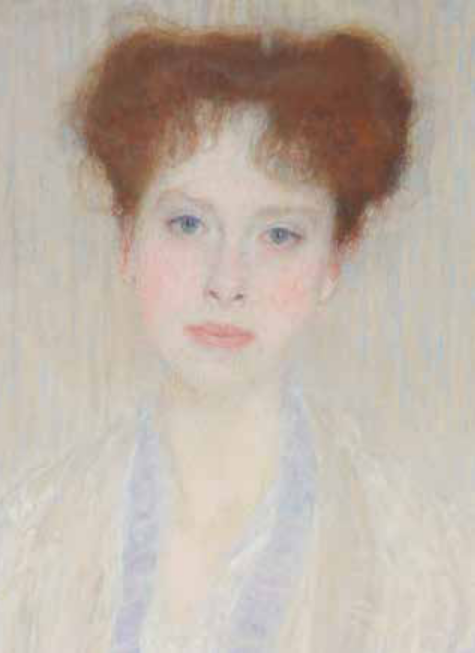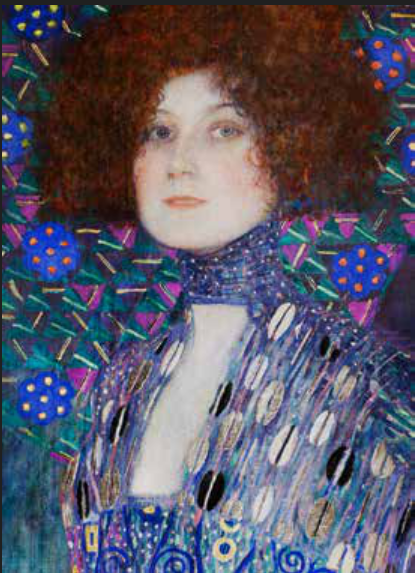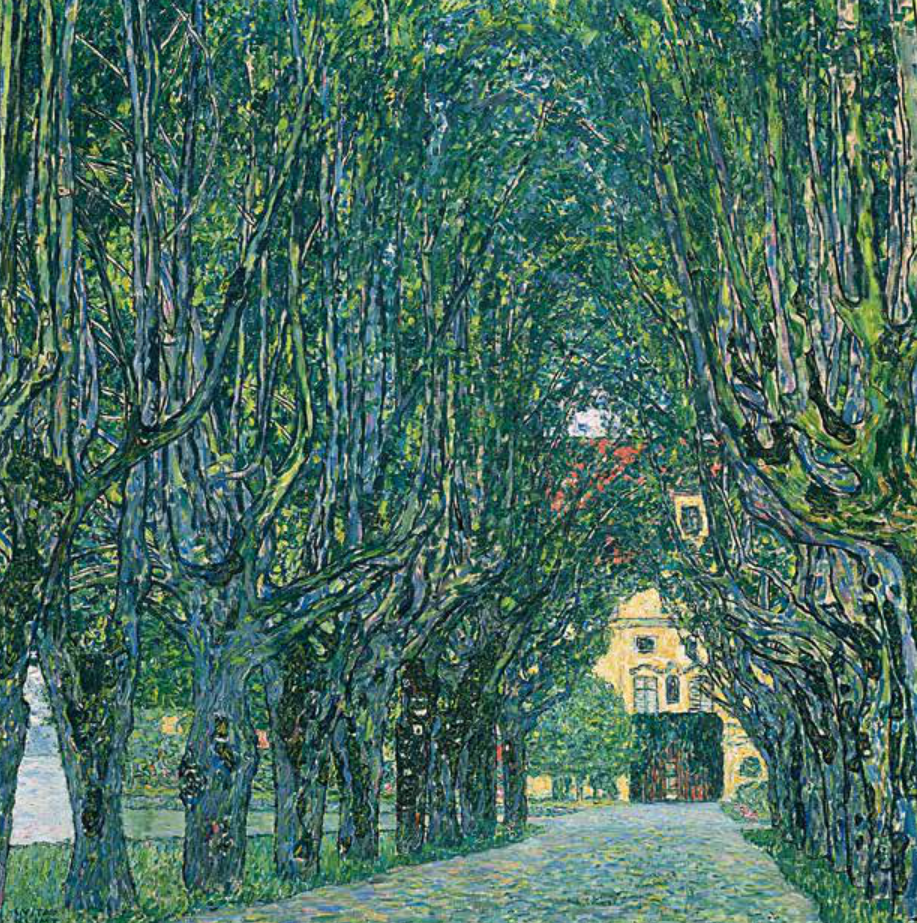The late nineteenth and early twentieth centuries were times of great change in Western culture and art. Numerous economic, cultural, and artistic centers emerged on the European continent, becoming key sites in the Modernist cultural movement. As the capital of the Austro-Hungarian Empire, Vienna was one of the intellectual and cultural hubs of Europe, and, along with Paris, Munich, and London, it became a place where Modernism thrived. Gustav Klimt was an important figure in Viennese art during this period, and his works reflected this artistic transformation in a unique way. He favored gold foil, as well as decorative and expressive techniques. He added gold to many works and he tended to combine detailed elements with abstract areas in images that frequently dealt with the female body and eroticism.
In 1897, Gustav Klimt, Koloman Moser, Josef Hoffmann, and other participants formed the Vienna Secession. Secession artists opposed and distanced themselves from classical academic art; they advocated innovation and pursued practicality and rationality in their expression. They emphasized the development of individual style, but they also explored incorporating elements of modern life to create a new mode that employed symbols. The strict pursuit of form, the flattened compositions, and the influence of East Asia were fundamental characteristics of this new artistic style. Their motto was “Der Zeit ihre Kunst. Der Kunst ihre Freiheit,” meaning “To the age its art. To art its freedom.” Although it did not last long and Expressionism rose to become the mainstream of modern art just a few years later, the Secession was the pride of Vienna and one of the pinnacles of European art in the late nineteenth and early twentieth centuries. The combination of modern thought and modern art inspired by the Secession is still very meaningful one hundred years later.
As a representative of the Vienna Secession, Klimt helped to organize 23 ground-breaking exhibitions for the group from 1897 to 1905. Because of the Secession, other contemporary European art of the same period was exhibited in Vienna, including works by Cézanne, Monet, Van Gogh, Rodin, Munch, and Hodler. A group of younger artists, including Oskar Kokoschka and Egon Schiele, also found worldwide fame through these exhibitions.
“Gustav Klimt: Forerunner of Modernism” was organized by the Chengdu Municipal Foreign Affairs Office, the Austrian Consulate General in Chengdu, and the Chengdu Management Committee of the Sichuan Tianfu New Area, and co-organized by the International Cooperation and Investment Service Bureau of the Chengdu Management Committee of the Sichuan Tianfu New Area. This exhibition offers us the opportunity to enjoy 26 oil paintings created by Gustav Klimt from 1899 to 1917, including masterpieces such as The Kiss, Adele Bloch-Bauer I, Adele Bloch-Bauer II, and Death and Life. Through these pieces, we can learn more about Klimt’s artistic career and his extremely expressive, creative world.

